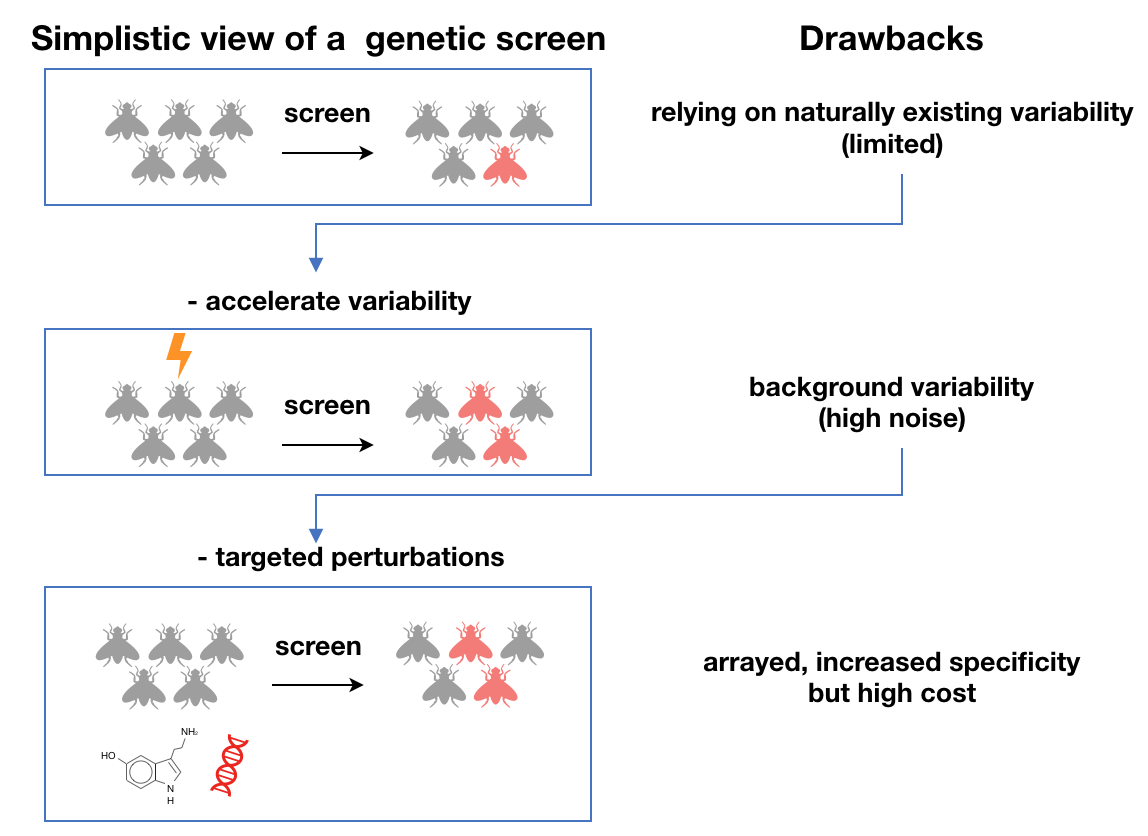Screening
Screening is the evaluation or investigation of something as part of a methodical survey, to assess suitability for a particular role or purpose.
Based on the study focus, in Biology we classify these workflows into genetic and drug screening. Genetic screening focuses on the role of genes during a biological process, while drug screening aims at identifying biologically active chemical compounds.

In general, screens involve large number of objects and the generation, analysis, and handling of large amounts of data.
Genetic Screening
Genetic screening, i.e. the methodical evaluation of the effect of different genetic modifications on a particular phenotype, is an invaluable strategy to assign function to individual genes. Historically, scientists have sampled naturally existing genetic variability in populations of classical genetic models such as Drosophila. As this variability is rather limited due to selective pressure in the wild, random mutagenesis screens have been used to facilitate the study of a bigger range of genetic modifications under laboratory conditions. However, this approach suffers from high background, and thus the isolation and identification of the causative mutation from the pool can be tedious.
Targeted perturbations (arrayed screens) using (bio-) chemical or biological (e.g. RNAi) agents offer low background and are extremely helpful for medium throughput screens, but can get very expensive at larger scales. CRISPR/Cas9 technology represents the 3rd generation of highly programmable Genetic Engineering tools (after Zinc-Finger and TALE Nucleases). The biggest advantage of CRISPR/Cas is their scalability, that combined with the advances in Next Generation Sequencing, now allows the perturbation of thousands of genes (whole genome targeting) in a pooled set up. This approach reduces cost and is therefore particularly attractive for large scale genetic screens.
